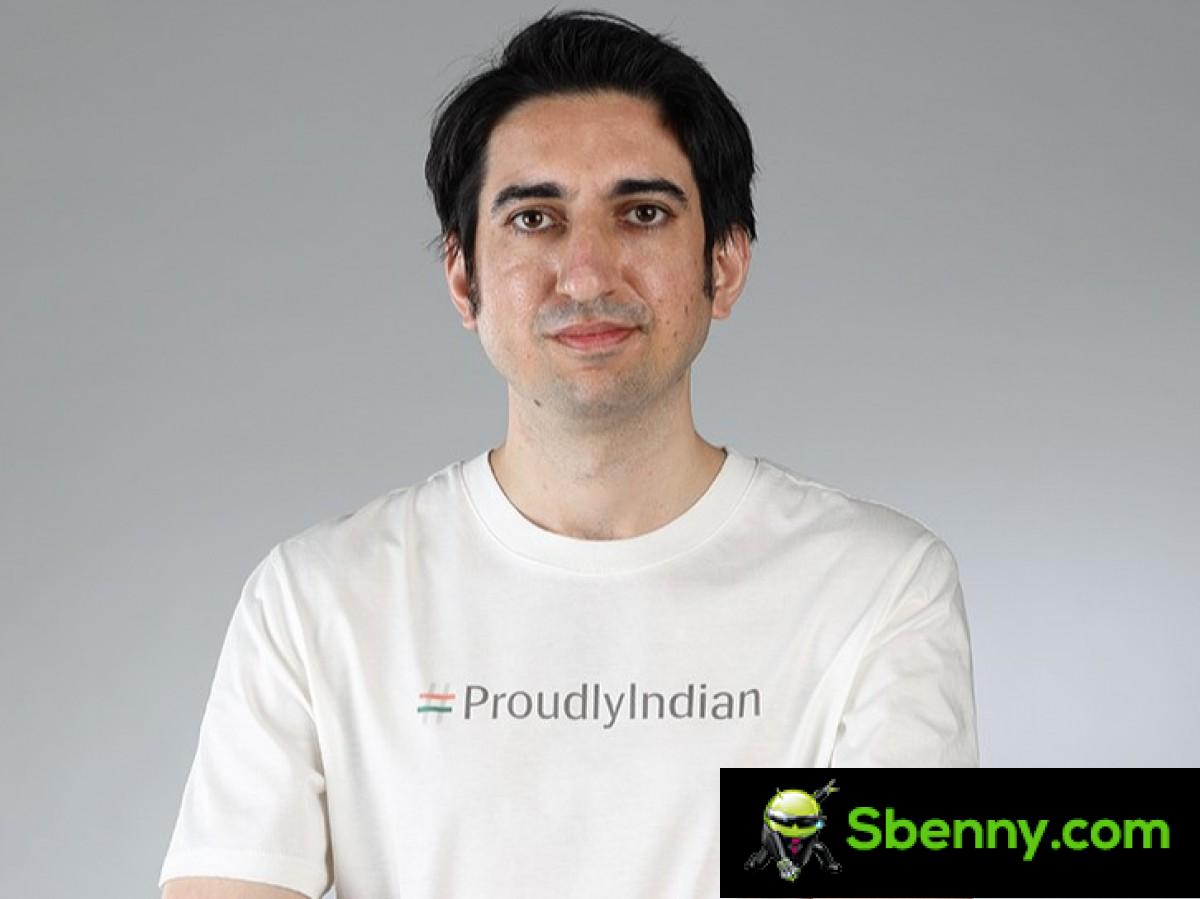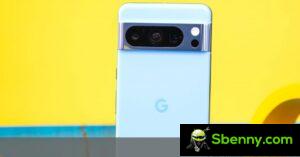Indian handset maker Lava currently operates in over 40 countries and aims to fight Chinese manufacturers, which have dominated the Indian market. We sat down with Tejinder Singh, Product Head, Lava International, to talk about the company’s current position and future plans.

Mr. Tejinder Singh, Product Manager, Lava International
Mr. Singh spoke about the innovations Lava brings to its users and the challenges Lava faces as an Indian brand. You can read the full interview below.
What is Lava’s current position in the Indian smartphone market and the phone market in general, in terms of market share and actual numbers?
There are two categories. One is the featurephone category where we are number 2 in India and number 3 globally. The second category is smartphones, where we are steadily increasing our market share. We are close to a 3% market share in the segment in which we operate. And what we’ve been doing for the past couple of years is investing consistently in R&D and working to develop custom features and provide the right software experience for consumers. In smartphones, our journey is still a work in progress.
We have had this perception problem before that Indian brands have a tendency to sell the device and then forget about the consumer. So we’ve worked significantly for that. We follow a policy of one major Android update and two years of constant software updates, including security and bug fixes. So we have been working in this direction and we are already seeing positive results.
But what we believe is going to be a long-term journey where we need to consistently deliver not just hardware, but software as well, and once we do, our market share in smartphones will grow rapidly. And if I have to give you a specific illustration, how we recently provided the Android update for our top model Agni. The security patches we deliver constantly every quarter and we are also working on the development of some exclusive features. We recently launched the Blaze 5G with YouTube background playback, which requires a YouTube Premium membership on competing devices.
We also came up with a MyZ concept that allowed for both hardware and software customization. The ZUp program allows you to upgrade your hardware after your purchase – let’s say you bought a 2GB RAM device and want to upgrade to 3GB – which has been made possible. So that’s our direction, we have to work constantly to improve this hardware and software experience.
A part of the journey has already been traveled and therefore some results are there. The rest will be covered in the following years as we are constantly investing in R&D and growing our R&D capabilities and hopefully positive results will follow in the following years.
Which innovations is Lava most proud of and what are the key elements to differentiate itself from the competition? What can we expect in the future?
We believe it is that we shouldn’t innovate for the sake of innovation. We have clearly defined our target customer, which is in the 18 to 24 age group. Very often it is a male student and all our innovations are focused on this consumer target. Customer research has revealed to us that other music apps support background play, but have limited songs. So we discussed with our R&D team and came up with YouTube’s background play feature.
Similarly, a large group of customers wanted the anonymous call recording feature and it is not available in the current Google OS suite. So, we discussed with our R&D team how to deliver it and bring it to our phones.
Other key features born out of consumer feedback are MyZ and ZUp. Consumers wanted to be able to select the configuration that was best for them without paying for features they didn’t need. And we came up with this concept where you can select the components you want. So if you want 6GB of RAM with an 8MP camera, that option is there. So, that was the whole concept of MyZ.
These are our past innovations. If we talk about the future, we are strengthening our consumer research team and constantly hiring from the best institutes. We have product team members who can bring consumer insights. We are focusing a lot on expanding the R&D capacity so that we can deliver the innovations and our innovations will be mainly focused on the key needs of smartphone users which are related to performance and camera.
I cannot reveal the exact details of the innovations they are working on but in the near future you will see these innovations which are related to the basic needs of smartphone consumers which are performance and camera. Some of the features that we will bring will be features that are unique to this set of consumers. And when I say this set of consumers, I basically mean the consumer in the sub-$150 price range.
What kind of R&D capabilities does Lava have right now?
Lava only developed the ability to design the phone from scratch in India. So if you’re going to design the phone, you need the industrial design team, you need the mechanical design team, and then you need the hardware team and a software team. We have all these four teams, which we have hired from the Indian Institutes, and we have the ability to develop the whole smartphone from scratch, and that is why we are able to bring the innovations and provide the regular updates and also the major android updates.
At present, we have approximate R&D resources in the order of 80 people and they have different kinds of hardware, MD, ID, software related skills and experiences, which they use to supply the smart phone as per the requirement of the Indian consumer. In addition to human resources, we also have the equipment related to camera infrastructure, audio infrastructure, reliability and quality. So, all that infrastructure has been created by us to ensure that we are able to develop the end-to-end device only in India.
So are Lava smartphones entirely made in India?
They are actually made in India, no doubt. So, there are two processes. One is the components that are introduced depending on the ecosystem of the supply chain. Some supply chains are located in China, some in different countries and some even in India. All these arrive at the Lava factory and we have the SMT capability where the components are mounted on the PCB and we prepare the PCBA.
So there is a separate assembly process. All of this is done within the Lava factory and we have constantly worked to improve the capacity. We currently have four SMT lines and about seven to eight assembly lines.
You can tell that all our smartphones are made in India although some components are from different countries as their ecosystem is not present in India. But even on that front we’re constantly working on localization as we previously imported the display from China but now we’re working on sourcing it locally and in one of the models we got the display locally. So the work continues steadily to locate more components and ensure that most of the components are sourced from India only.
You have a large presence in the feature phone market, but the days of that segment are clearly numbered – are you sure you will be able to retain customers when they move to smartphones?
Yes, we are very confident that we will be able to maintain this customer base. This is actually a pillar of our strategy. We have approximately a 40 million consumer base that we can move to Lava smartphones over the next five years as we transition from the featurephone market to the smartphone market.
The reason we say this is because featurephones are again fully designed in India and that is why we are able to control the failure rate. Failure rates are very low – as in decimal points – and customer satisfaction is very high.
In featurephones, the life cycle is very long, like three or four years, and when a device is able to deliver consistent performance for three or four years, there is a certain trust in the brand, which develops.
What we have learned from our understanding of the market is that there is a high barrier to entry for customers in rural areas, so entering their lives is difficult. But once you’ve entered their life and delivered the right amount, you can continue to enjoy the loyalty. Loyalties are highest in this segment and this will be our one pillar of strategy to move this feature phone base to our Lava smartphones.
As for smartphones, are you planning to move beyond the entry-level segment and maybe join the battle in the mid-range?
All right, while the ASP market is increasing, we’re also working steadily to shift our ASP and year over year, we’re improving our ASP. That said, the main game is still in the INR 15K segment, with a flagship model in the INR 15K to 20K range, and next year you will see a further increase in ASP from us. But we want to do it gradually, because we believe that sustainable growth is much more important than short-term growth.
What will be the focal points when designing your next phones? Will it be the camera, the display, the battery life or something else?
The customer segment we address is that of young people and our research has revealed to us that the greatest need and the sore point of the consumer is performance. So the big key point we’ll focus on will be performance, followed by the camera and design, because the consumer is quite happy with the battery life from a 5,000mAh battery.
However, we have noticed that there is a demand for fast charging in some segments. That’s a different question, but consumers are quite happy with the battery life of a 5,000mAh battery.
The display quality in the entry-level segment is HD, which is not ideal when compared to FHD, but consumers are ready to compromise. However, the performance, design and camera are aspects consumers don’t want to compromise with. So, those are going to be the focal points for us.
How difficult is it for an Indian handset maker to compete with Chinese and Korean rivals and how important is the Made in India program to your competitiveness?
It’s challenging, but it’s also exciting, and as we see it now, we are the only ones representing India because other Indian brands have almost left the market. So let’s carry forward the hopes of 1.3 billion people that there should be an Indian brand that can supply the mobile devices. So I’ll say it’s challenging, but it’s a challenging challenge, and that’s how we see it.
In relation to the Made in India program, under the PLI program of the government, Indian brands get benefits in the sub $200 segment. So this is a benefit for us as we have applied for the same and we are a part of that program. The PLI program is a great help from the government for Indian brands.
Are you planning to pursue broader international availability and what would be your next steps towards that?
Yes, we are pursuing international expansion. We recently acquired a company in Latin America called “bmobile”. That acquisition was only intended to accelerate our international expansion. This is also an agenda that we are driving. But our main target market will remain India for the next couple of years along with the growth of the Indian market.
There will also be growth in the international market, but the main market will be India. And the next steps for that are investing in both consumer research and R&D to deliver the products that are proudly Indian and that every Indian can be proud of.
We will focus on R&D investments in subsequent years to drive product because we believe we better understand Indian consumers, especially in the segment in which we operate.
How long will it take for Lava as an Indian brand to catch up with its Chinese and Korean rivals and be a globally known brand?
I will share this. If you will say within the segment that we are working let’s say less than INR 20K then this journey can be done in the next one or two years. It is possible if we are able to execute on our R&D extension plans and work to constantly improve the product. However, further improving ASPs and moving to higher ASPs will be a long-term plan, like a five-year plan.
Can you tell us something about Lava’s next smartphone?
We are planning to offer another 4G consumer device at an affordable price. Its focus will be on performance and we will be using a MediaTek G-series chipset.
Is there anything else you would like to say to our audience?
I would like to tell the public that they should buy Lava devices, and I’m pretty sure all the doubts they have in mind regarding Indian brands in general will be cleared. They will have a very different experience as we have built the product in a very different way than other Indian brands. That’s why we are still able to sustain in the competitive market.
We don’t believe in selling the device and then forgetting about the customer. We are constantly working to improve the customer experience throughout the lifecycle by providing appropriate updates, upgrades and bug fixes. So this will be a big difference that an Indian consumer will find.
I can tell all Indians that Lava is definitely a brand they can trust and be proud of. Lava phones are made by Indian engineers and they can be proud of this work done in India.







Start a new Thread